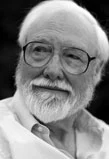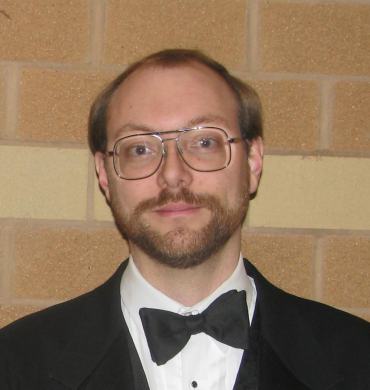The Well-Tempered Ear
Classical music: The amateur Middleton Community Orchestra scores another success with difficult works, a young local soloist and rarely heard repertoire. Plus, French organist Marie-Claire Alain is dead at 86.
Leave a Comment
NEWS UPDATE: Famed French organist Marie-Claire Alain (below) has died at 86. She had a very impressive career, with hundreds of recordings to her credit, especially for a serious rather than showy organist, as you can read about by using this link to an obituary in the British Gramophone Magazine: http://www.gramophone.co.uk/classical-music-news/obituary-marie-claire-alain-organist
By Jacob Stockinger
Here is a special posting, a review written by frequent guest critic and writer for this blog, John W. Barker. Barker (below) is an emeritus professor of Medieval history at the University of Wisconsin-Madison. He also is a well-known classical music critic who writes for Isthmus and the American Record Guide, and who hosts an early music show every other Sunday morning on WORT 88.9 FM. He serves on the Board of Advisors for the Madison Early Music Festival and frequently gives pre-concert lectures in Madison.
By John W. Barker
It is a pity that the audience was not larger for the winter concert by the Middleton Community Orchestra (below) at the Middleton Performing Arts Center on Wednesday evening. Snowy weather was doubtless something of the cause. But the program, rather a grab bag, was in fact most enjoyable.
One might discern national circles in it. Framing the whole was Italian music. The opener was the overture to Verdi’s third opera, “Nabucco.” Under conductor Steve Kurr, it received an appropriately dramatic reading. And at the end came Benjamin Britten’s witty suite of arrangements of five tidbits by Rossini. Britten’s colorful orchestrations gave the players a lot of fun to enjoy.
Then there was an inner framing, a Wagnerian one, to be sure. On one side, the mighty “Siegfried’s Funeral March” from Die Götterdämmerung (Twilight of the Gods), and on the other an orchestral interlude from Lohengrin. These were ambitious choices, and proofs of the MCO’s willingness to tackle demanding assignments. The exacting orchestral writing by Wagner (below) requires absolute precision in order to achieve the intended sonorities.
These pieces were a challenge for the largely amateur players, and some ensemble difficulties could not be avoided entirely — the brass in particular has a way to go toward necessary balance and discipline, one must say. But the power and richness of these pieces was by no means betrayed.
At the dead center of the program was its major work, a French one, the Violin Concerto No. 3 by Camille Saint-Saëns (below).
The concertos by this composer were once standard concert fare, but most have tended to sink into neglect, partly as a result, I think, of a snobbish negativity that has somehow developed toward this composer in recent years.
But they are wonderful works, and this violin concerto in particular. It is full of splendid tunes and ample opportunities for brilliant solo display–it was composed, after all, for Saint-Saëns’s friend, the famous virtuoso Pablo de Sarasate. Its opening movement, in straight sonata form, is a piece of calculated melodrama, while the rondo-finale is full of dazzling variety. In between is a barcarolle-slow movement of absolutely melting beauty. (Call it rather a Siciliana or a lullaby, if you will, it’s simply gorgeous!).
Stepping from her usual role as principal violin and concertmaster into the solo spotlight was young Alice Bartsch (below), one of two gifted violinist sisters from Minnesota who are still in student mode at the University of Wisconsin School of Music. In this concerto, Bartsch took on a demanding virtuoso role and succeeded handsomely. She already has a full tone and growing technical confidence, demonstrating a genuinely advancing maturity as an artist.
Above all, specific praise is due to her, and to maestro Kurr (below), for bypassing more obvious warhorses and reviving this unjustly neglected masterpiece by the unjustly underrated Saint-Saëns. That, too, within acknowledgement of how Kurr and his talented and enthusiastic players continue to grow in ensemble ability, despite their limited rehearsal time. Their concerts should be appreciated and supported by a widening audience.
EDITOR’S NOTE: Here is a link to another positive review by Greg Hettmansherger, who writes his “Classically Speaking” blog for Madison Magazine:
- May 2024
- April 2024
- March 2024
- February 2024
- January 2024
- December 2023
- November 2023
- October 2023
- September 2023
- August 2023
- July 2023
- June 2023
- May 2023
- April 2023
- March 2023
- February 2023
- January 2023
- December 2022
- October 2022
- September 2022
- June 2022
- May 2022
- April 2022
- March 2022
- July 2021
- June 2021
- May 2021
- April 2021
- March 2021
- February 2021
- January 2021
- December 2020
- November 2020
- October 2020
- September 2020
- August 2020
- July 2020
- June 2020
- May 2020
- April 2020
- March 2020
- February 2020
- January 2020
- December 2019
- November 2019
- October 2019
- September 2019
- August 2019
- July 2019
- June 2019
- May 2019
- April 2019
- March 2019
- February 2019
- January 2019
- December 2018
- November 2018
- October 2018
- September 2018
- August 2018
- July 2018
- June 2018
- May 2018
- April 2018
- March 2018
- February 2018
- January 2018
- December 2017
- November 2017
- October 2017
- September 2017
- August 2017
- July 2017
- June 2017
- May 2017
- April 2017
- March 2017
- February 2017
- January 2017
- December 2016
- November 2016
- October 2016
- September 2016
- August 2016
- July 2016
- June 2016
- May 2016
- April 2016
- March 2016
- February 2016
- January 2016
- December 2015
- November 2015
- October 2015
- September 2015
- August 2015
- July 2015
- June 2015
- May 2015
- April 2015
- March 2015
- February 2015
- January 2015
- December 2014
- November 2014
- October 2014
- September 2014
- August 2014
- July 2014
- June 2014
- May 2014
- April 2014
- March 2014
- February 2014
- January 2014
- December 2013
- November 2013
- October 2013
- September 2013
- August 2013
- July 2013
- June 2013
- May 2013
- April 2013
- March 2013
- February 2013
- January 2013
- December 2012
- November 2012
- October 2012
- September 2012
- August 2012
- July 2012
- June 2012
- May 2012
- April 2012
- March 2012
- February 2012
- January 2012
- December 2011
- November 2011
- October 2011
- September 2011
- August 2011
- July 2011
- June 2011
- May 2011
- April 2011
- March 2011
- February 2011
- January 2011
- December 2010
- November 2010
- October 2010
- September 2010
- August 2010
- July 2010
- June 2010
- May 2010
- April 2010
- March 2010
- February 2010
- January 2010
- December 2009
- November 2009
- October 2009
- September 2009
- August 2009
Archives
- 2,491,543 hits
Blog Stats
Recent Comments
| Brian Jefferies on Classical music: A major reass… | |
| welltemperedear on What made Beethoven sick and… | |
| rlhess5d5b7e5dff on What made Beethoven sick and… | |
| welltemperedear on Beethoven’s Ninth turns 200… | |
| Robert Graebner on Beethoven’s Ninth turns 200… |
Tags
#BlogPost #BlogPosting #ChamberMusic #FacebookPost #FacebookPosting #MeadWitterSchoolofMusic #TheEar #UniversityofWisconsin-Madison #YouTubevideo Arts audience Bach Baroque Beethoven blog Cello Chamber music choral music Classical music Compact Disc composer Concert concerto conductor Early music Facebook forward Franz Schubert George Frideric Handel Jacob Stockinger Johannes Brahms Johann Sebastian Bach John DeMain like link Ludwig van Beethoven Madison Madison Opera Madison Symphony Orchestra Mead Witter School of Music Mozart Music New Music New York City NPR opera Orchestra Overture Center performer Pianist Piano post posting program share singer Sonata song soprano String quartet Student symphony tag The Ear United States University of Wisconsin-Madison School of Music University of Wisconsin–Madison Viola Violin vocal music Wisconsin Wisconsin Chamber Orchestra wisconsin public radio Wolfgang Amadeus Mozart YouTube





